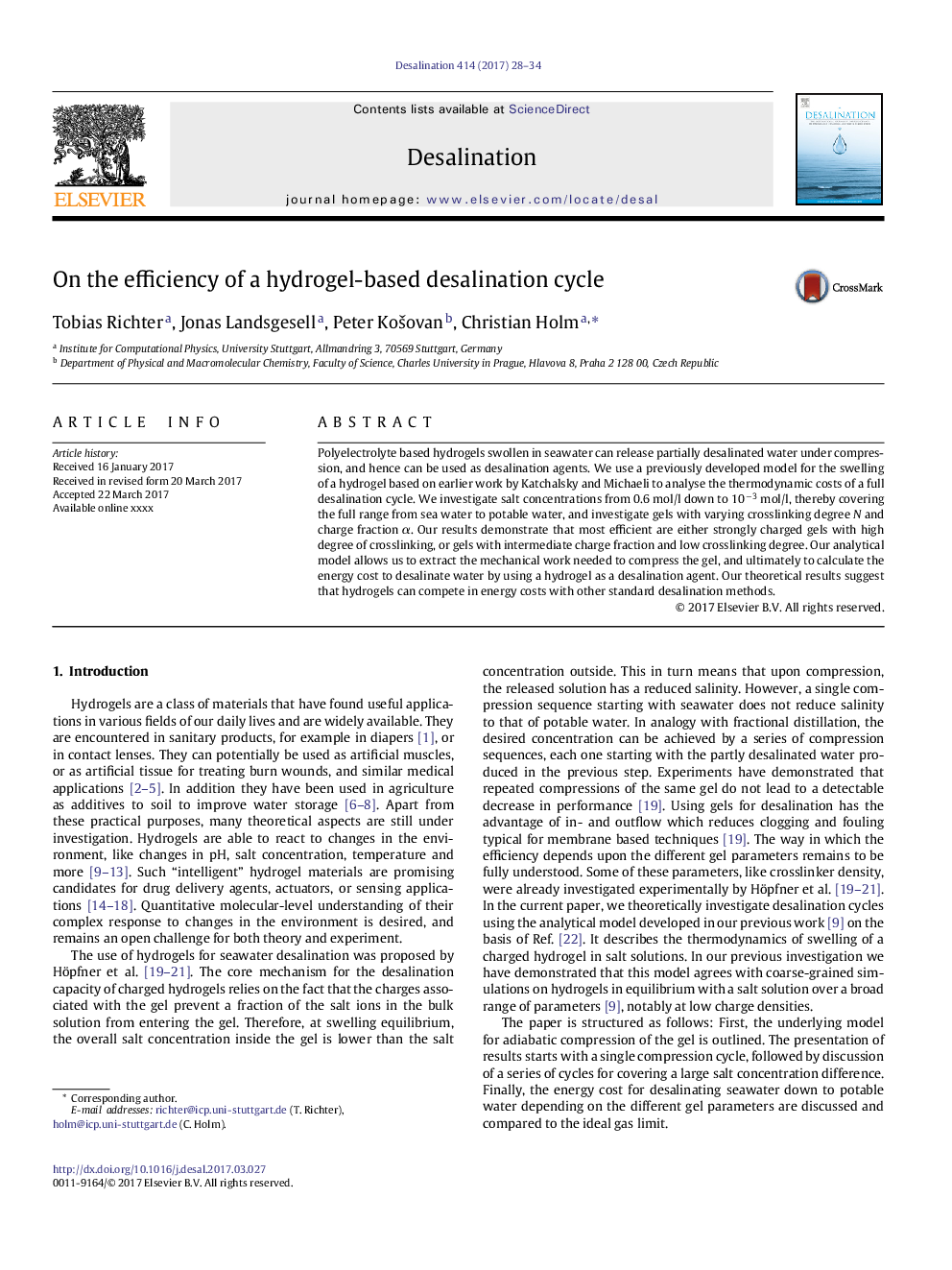| Article ID | Journal | Published Year | Pages | File Type |
|---|---|---|---|---|
| 4987741 | Desalination | 2017 | 7 Pages |
Abstract
Polyelectrolyte based hydrogels swollen in seawater can release partially desalinated water under compression, and hence can be used as desalination agents. We use a previously developed model for the swelling of a hydrogel based on earlier work by Katchalsky and Michaeli to analyse the thermodynamic costs of a full desalination cycle. We investigate salt concentrations from 0.6 mol/l down to 10 â3 mol/l, thereby covering the full range from sea water to potable water, and investigate gels with varying crosslinking degree N and charge fraction α. Our results demonstrate that most efficient are either strongly charged gels with high degree of crosslinking, or gels with intermediate charge fraction and low crosslinking degree. Our analytical model allows us to extract the mechanical work needed to compress the gel, and ultimately to calculate the energy cost to desalinate water by using a hydrogel as a desalination agent. Our theoretical results suggest that hydrogels can compete in energy costs with other standard desalination methods.
Related Topics
Physical Sciences and Engineering
Chemical Engineering
Filtration and Separation
Authors
Tobias Richter, Jonas Landsgesell, Peter Košovan, Christian Holm,
